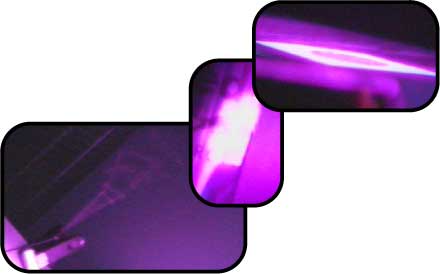
In his latest effort, Neal Stephenson proves to his audience that crypto can be interesting. Although it's heavily rooted in obscure and often obtuse mathematics, the art of cryptography proves to be one of today's prevailing new technologies. One of the primary reasons for its commonly misunderstood and subsequently mythologized nature is that ctryptology, in its very nature, is hard to comprehend. Despite the 900 pages it takes him to do it, Stephenson does a decent job making crypto available to the general public. He does so with typical Stephenson style, weaving two near-completely-different stories told in different eras together through one common theme. In one hand we have a tale of World War II, following a young genius Lawrence Pritchard Waterhouse through the intricacies of wartime code-breaking. In the other we have another war; a war of information. Told in the modern day, we follow Randall Lawrence Waterhouse and learn the problematic nature of being a hacker caught up in something big. Both are told with equal style and grace, flowing from integral plot point to characteristic Stephenson soliloquy with the break of a paragraph or the turn of a page.

I'm not much for classical criticism of Book (I feel I don't know enough to judge on many levels), but I know what I enjoy. I would gladly take Ellroy over Dickens, and Clarke over Bronte. I like books that are fun, books that are cool, and books that interest me. I do not read for the sake of reading, I read for the sake of enjoyment. So when I say that this book is good, I do not mean that this book is bound to become a Classic. What I do mean is that this book captivated me, interested me, and gave me some enjoyment in an otherwise dreary day. In this case however, I might have gotten too much enjoyment.

When speaking in normalized terms, the first third of the book is usually exposition, the second the "good stuff", and the third that end-of-book push that one has to make because he can't stand to put the book down any longer. So, for instance, let's take a 300-page book. A reader sits down with it, takes a look at the cover, perhaps reads the introduction, and starts into it. Presupposing that the book is actually good, the reader becomes captivated by the characters and settings being laid down. Before he knows it he's 70 pages in and it's 4:00 am. Over the next few days he reads bits at a time, saying "man, this is a good book" every so often. Three or four days later he finds himself on page 280. This is the critical night; a night of little sleep and much rolling over. He goes way beyond his pre-designated bedtime because after all, there's only 50 pages left. The book is written in such a way that these last sections must be read in one sitting. So the reader obliges, finishes the book in a mad rush, and sleeps peacefully while images and ideas of what he's just read jump around in his head like sugar plums.

My experience with Cryptonomicon is that it reads much the same way. The first third was exposition, then some "good stuff" with the last third being a mad rush. Problem: Cryptonomicon is 900 pages long. This means 300 pages of exposition, 300 pages of "good stuff," and 300 pages of mad rush. 300 pages is the size of our sample novel! For me (a novice at reading with a rate of roughly one page per minute), this presented a problem. My mad rush, if taken in one gulp as intended, would last 5 hours. I didn't have 5 straight hours to kill, so subsequently I had to undergo intense frustration at not being able to finish the damn thing and find out how everything ends up. Consider this a warning.

The actual cryptography in the context of the story is integrated very nicely and in such a way that's easily understandable. Just as film will water down certain topics such as computers (much to my chagrin) for the sake of clarity, one gets the same feeling from the math in this book; it's there, but it's shallow. This obviously serves his needs for clearly anyone that is reading with a clear head can comprehend what's going on. Many people however (most of them being fellow cryptanalysts), cringe at this flagrant abridgement, claiming that it's not "correct" unless it's complete. To combat these activists, Stephenson does include an appendix dealing with the algorithm used (the SOLATAIRE algorithm), complete with statistical analysis and instructions of use. I found it to read very much like a textbook (which is good, I suppose).

The actual story is quirky, yet sound. It doesn't really follow the standard Plot Curve, but it still manages to enthrall up to the last page. The beginning is very fragmented, giving hints of where you are and what you're seeing. I compare it to starting a host on a close-up and zooming out rather than starting long and zooming in. One sees the details before he sees the context. For a while it's abrasive, but this technique just did more to stir my curiosity and keep me reading. Sooner or later everything fits together.

Stephenson is clearly a subscriber of the new school, veering away from more classical writing forms and into the realm of expressionism. Each character not only has his own traits and feelings, but also his own style on the page itself (look for footnotes and haikus). In one chapter, he breaks right into a 17-page electronic memo being sent by the protagonist to his friends (adopting both the font and the style of a informal account of a trip into the jungle). To some this may prove to be disorientating, but to others it just screams "Cool."
The Bottom Line

Looking for an enjoyable read to last you a while and keep your interest? Something grand in scale yet filled with entertaining characters and exotic locales? A Modern-day tale told in future-day style? Cryptonomiicon might just do it for you.

